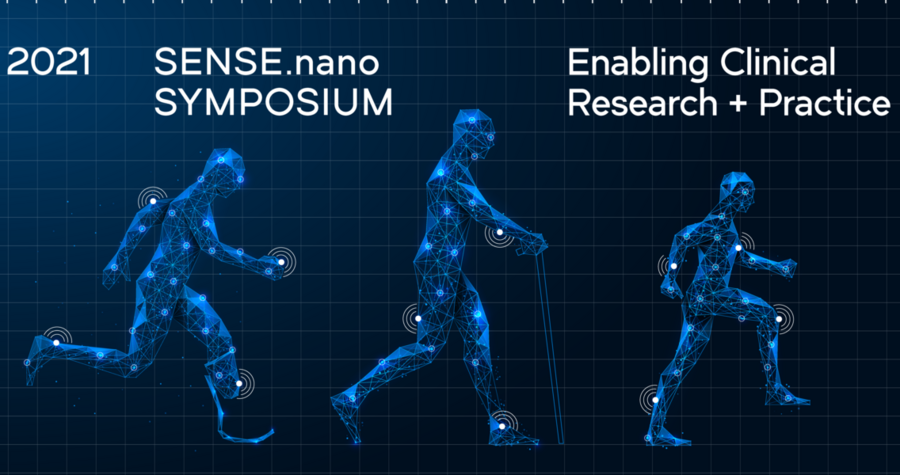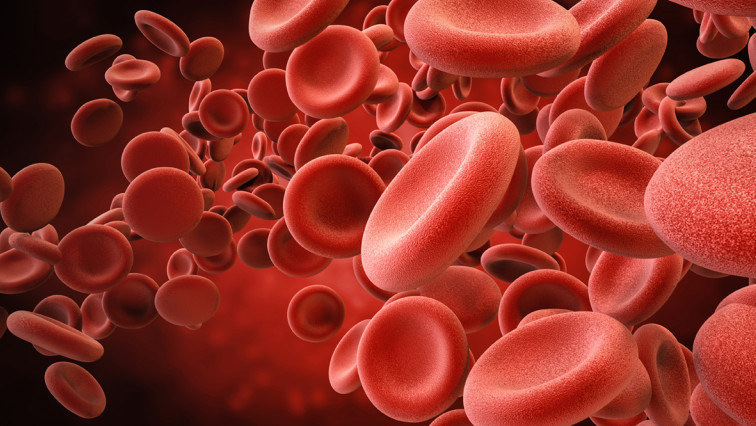Sensors and sensing systems — from devices that count white blood cells to technologies that monitor muscle coordination during rehabilitation — can positively impact medical research, scientists said at the 2021 SENSE.nano Symposium.
The virtual event focused on how sensing technologies are enabling current medical studies and aiding translation of their findings to improve human health. Featuring leaders from research and industry, MIT-launched startup companies, and graduate students, the event was the fifth annual meeting organized by SENSE.nano.

The 2021 SENSE.nano symposium focused on human subjects research, exploring how sensors and sensing systems can enable current medical studies and future clinical practice.
“In this era of big data, sensors are everywhere — in our homes and vehicles, medical devices, phones, and even clothing,” says MIT.nano Director Vladimir Bulović. “This year’s symposium was an exploration of how this breadth of new sensors and new sensing techniques will propel the standards of current medical work, bringing forward new clinical practice and better health for all.”
The SENSE.nano 2021 speakers discussed a range of technologies under the research themes of human motion studies, physiological monitoring, imaging at multiple scales, and devices and strategies for collecting specimens and performing biopsies. Presenters described novel research methods — such as drawing inspiration from dancers’ movement to study how muscles represent rhythm — and novel applications such as neural interface wearables to help humans better interact with robots and other electronic systems.
The symposium also celebrated the re-opening of the MIT Center for Clinical and Translational Research (CCTR, formerly the MIT Research Clinical Center). Along with remodeled health labs for research participants, the CCTR features a prototype workshop, motion capture lab, and observation and instrumentation suites for MIT and visiting human health researchers.
“SENSE.nano 2021 brought together nanoscience, nanotechnology, and the practice of medicine through our shared and central facilities — MIT.nano and the new CCTR,” says Brian Anthony, the associate director of MIT.nano and principal research scientist in the Department of Mechanical Engineering. “MIT.nano has the tools to support fabrication and design of sensors, and the CCTR has the clinical research space to study how these sensors can support medical practice.”
The patient-centered application of many sensing technologies used in medical research, including motion capture and wearable analytic devices, makes it more important than ever to include patients as active participants in such research, said keynote speaker Cecilia Stuopis, medical director of MIT Medical.
“We want the evaluation of questions and outcomes meaningful and important to patients and caregivers to be central to the process, because we want to recognize that they have unique perspectives, values, and goals for what we are trying to learn or accomplish,” Stuopis said.
Encouraging collaborative relationships between researchers and health-care providers has the potential to shorten the usual 17-year gap between basic research and its widespread acceptance in the clinic, she added, in part by connecting researchers with underserved populations who may not normally participate in clinical trials.
The symposium featured speakers from more than 10 MIT departments, labs, or centers (DLCs), including mechanical engineering, biological engineering, chemistry, and computer science and artificial intelligence. Their presentations underscored the multidisciplinary reach of sensors research. Mechanical engineering Associate Professor Jeehwan Kim demonstrated a perforated electronic skin, which can collect physiological data from the body without being damaged by sweat. Inspired by her grandmother’s stroke, Kaymie Shiozawa, a mechanical engineering graduate student, shared her work on human balance that she hopes will lead to a new robotic cane. In the imaging session, Lester Wolfe Professor of Chemistry Moungi Bawendi discussed a noninvasive method of using near-infrared and shortwave infrared to track the progression of liver disease.
As in previous years, SENSE.nano 2021 also highlighted the innovation ecosystem at MIT, with presentations by MIT-launched startups working to grow their ideas to scale.
MIT.nano and the CCTR are united by their active engagement with startup companies, said Brian Anthony. For instance, ongoing studies at the center have helped Leuko, a startup that makes a device for non-invasive, at-home white blood cell monitoring, refine and improve its product. Leuko was one of three medical sensor startups featured in this year’s symposium, along with Pison Technology and Stratagen Bio.
Read the original article on Massachusetts Institute of Technology (MIT).







